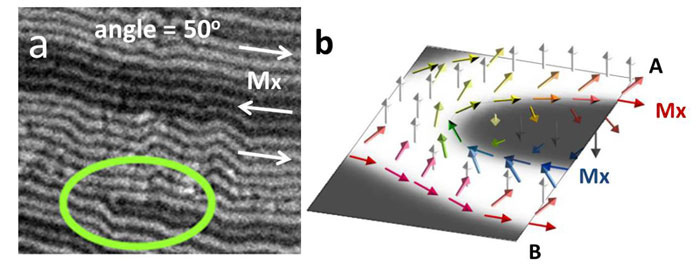The technology of magnetic storage of digital data has made enourmous progress in the last two decades thanks to the scientific advances in nanomagnetism, resulting in the creation of smaller devices with larger capacities and better performances. At present, magnetic bits have dimensions of only few tens of nanometres.
Magnetic devices are based on stacks of ultrathin films of different magnetic characteristics which can influence their behaviour. Nowadays, one of the hot research topics is the interaction of these films, how to improve their fabrication and define their magnetic characterization.
A group of scientists from the ALBA Synchrotron, the University of Oviedo, the University of Porto and the National Microelectronics Centre (CNM-CSIC) has carried out a research that sheds light on the magnetic domains in ultrathin magnetic films.
Using ALBA's X-rays, the researchers have been able to precisely measure the angles of magnetization of the magnetic domains and to determine how they change when they are buried – covered by other material film. "This is important to know because it affects the magnetic storage density and the behaviour of the magnetic devices", according to Salvador Ferrer, scientific advisor to the director of the ALBA Synchrotron and one of the authors of the study.
In the experiment, scientists have used MISTRAL beamline, equipped with an X-ray transmission microscope, based on the so-called dichroic contrast by using specific X-ray energies that match the electronic levels of the buried magnetic domains.
The films have been mounted on a goniometer for varying the angle of incidence of the photon beam relative to the surface of the films, deducing the orientation of magnetic domains and identifying defects in the magnetic structures. This can help in the understanding of "the magnetic behaviour of magnetic films, improving their control and use", says Ferrer.

Fig: Panel a shows the stripe domains of a NdCo film of 55 nm thickness covered by a layer of 40 nm of permalloy. The green ellipse contains a dislocation having two branches. Panel b schematizes the orientation of the magnetization at the dislocation core: when moving from A to B the magnetization describes a clockwise helical trajectory.




